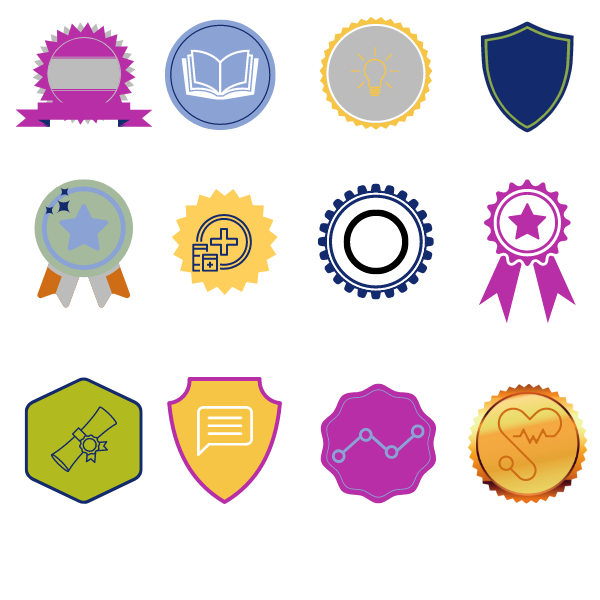Navigating Potholes in the Road on your Microcredential Journey
Published by: WCET | 6/15/2023
Tags: Accreditation, Credentials, Leadership, Student Success
Published by: WCET | 6/15/2023
Tags: Accreditation, Credentials, Leadership, Student Success

The WCET Steering Committee Microcredentialing workgroup is a small and passionate group of higher education leaders and practitioners. Led by Krysia Lazarewicz, Wiley University Services, and Suzanne Ehrlich, University of North Florida, the group has had discussions since December 2022 about where WCET can provide value and avoid duplication of work being led by other organizations.
Throughout the initial meetings, it became apparent that WCET should do what WCET loves to do anyway – collaborate as a community to share knowledge and experiences. The conversations between committee members were cathartic and reenergizing. They helped each other sort through the noise and surface potholes along the microcredentialing highway. This Frontiers blog is a result of those shared stories about opportunities and challenges.
Although everyone has a different map and destination, hopefully this blog post helps you navigate some of the potential potholes on your microcredentialing journey.
Microcredentials represent focused units of learning that validate specific skills and competencies. Microcredentials are typically a digital record of achievement of a skill or competency. There are various definitions across leading higher education organizations and currently, there is not a single industry recognized definition of microcredentials. WCET published a blog post in June 2022 about the definitions and the need for clarity at the start of a microcredential initiative.
Digital Promise defines a microcredential as “A competency or skills-based recognition that allows a learner to demonstrate mastery and learning in a particular area (Digital Promise).”
WCET recommends the following resources for definitions and key terms:

Establishing your institution’s working definition at the inception of a microcredential initiative provides clarity throughout the development and implementation of a program. The WCET working group found that spending time on crafting the ideal definition delays progress; therefore, find one that aligns with the mission of your institution and goals of the microcredential initiative, and get to work.
Verifying and aligning the skills and competencies acquired through microcredentials is crucial. Start small. Begin with a single noncredit microcredential and eventually scale up from there. Determine how competencies will be assessed. Assuring that competencies are assessed and meet or exceed quality standards are essential to the integrity of the microcredential certification. Partnerships between institutions, industry patterns, and professional organizations build trust and validity in microcredential.
In WCET’s May 2022 blog post, the authors wrote “When considering whether a microcredential strategy is right for your university, it’s important to begin with the end in mind. When your strategy is a wild success, what will be different for your learners and for your university? What will you measure, observe, or be able to report that highlights the ways that microcredentials have added to your overall impact as an institution? And perhaps most importantly, what will students say when asked how they have been impacted?”
Define your institution’s initiative goals. Microcredentialing is a lower barrier of entry for learners who may not be able to commit to a full degree but are still looking to invest in their potential. For students currently enrolled, a microcredential can aid completion by recognizing units of learning, rather than the zero-sum game of no credential unless a degree is attained. Typically, institution’s goals include one or more of the following:
Goals that align with the institution’s strategy and mission, as well as meet the needs of learners/earners, are most effective. By aligning microcredentialing with the goals of the institution and identifying the right target market, funding is more likely as microcredentialing is viewed as an opportunity, not a barrier.
The F word doesn’t have to be a pothole. Funding models for microcredentialing include:
Educational benefits such as tuition reimbursement, subsidies, or employer-sponsored programs may also be available. These benefits incentivize learners to acquire new skills and competencies while reducing financial barriers.
Financial hurdles are another reason to start small and eventually scale up microcredentialing programs. Determine how costs will be covered, how ROI will be calculated, how the program will be marketed, and a timeline for sustainability. Clearly stating the reasoning for microcredentialing at your institution is key to calculating the return on investment and allaying fears of cannibalization of course or program enrollment.

Courageous leadership is key to a successful microcredential initiative. Strong leadership convenes key stakeholders, develops policies and procedures, outlines the strategy, identifies the goals, establishes metrics, and continually seeks process improvements. Leaders work across the institution to continually communicate, and pivot as needed.
Successful implementation of microcredentials requires collaboration among various stakeholders including industry experts, employers, faculty, admissions, the registrar’s office, and students in conversations surrounding the design and development of microcredentials. Creating a strategic roadmap that aligns microcredentials with the institution’s mission, vision, and long-term goals is essential for sustainable implementation and success.
Microcredentialing is gaining momentum as students spur demand, employers recognize the value of shorter-term certifications, and institutions see the opportunities for recruitment and retention. As your institution explores or evaluates microcredentialing, consider the road ahead, view the opportunities, plan for a few bumps, but know you can avoid the potholes.
WCET members, this month’s Closer Look Guide, sent through wcetNEWS, dives further into these topics. Additionally, the Closer Look covers: